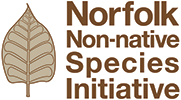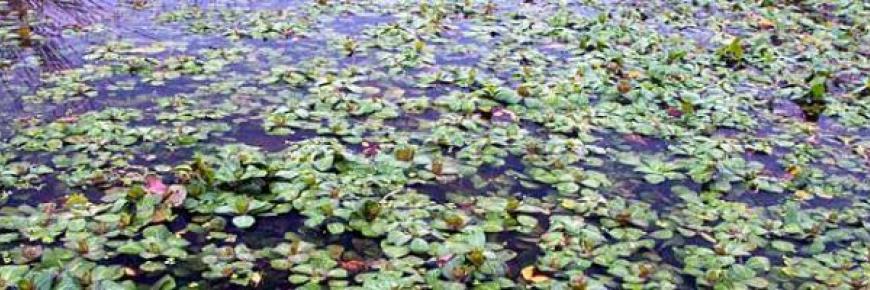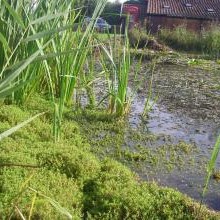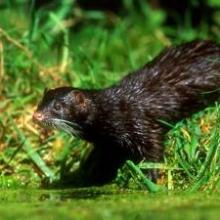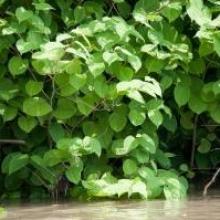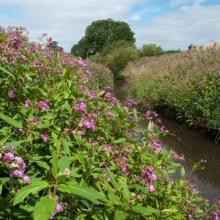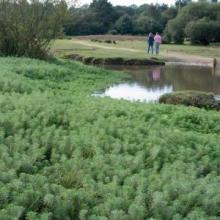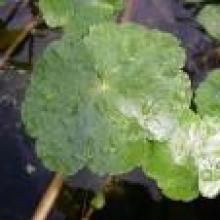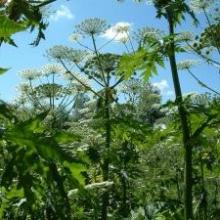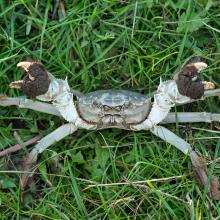Invasive Non-Native Species
What are invasive non-native species?
An invasive non-native species is any living thing which has spread outside its native range and causes environmental and/or economic harm in its new environment.
Signal crayfish, CC BY SA. Astacoides
Invasive species are often introduced into new areas by humans. For example, many invasive plants and animals in the UK were deliberately brought here by the Victorians as ornamental species, which then escaped into the wild. They can also arrive in new areas via the ballast water of oceangoing cargo ships, attached to ships hulls, or on equipment. Other accidental methods include introducing non-native species as “hitch-hikers” on imported food and goods such as soils and timber. Once established, many of these species often spread via rivers and waterways.
While there are many pathways of arrival, invasive species can pose one of the most serious threats to biodiversity worldwide. They can cause the extinction of native plants and animals, reduce biodiversity, compete with native organisms for limited resources and alter habitats. This can result in huge economic impacts and catastrophic disruption to ecosystems. It has been estimated that damage caused by invasive species amounts to almost five percent of the world economy! In Britain alone, these species cost our economy approximately £2 billion a year.
It is important to remember that not all non-native species are associated with negative effects and only 10-15% of non-native species are considered invasive. Indeed, many of our most valuable crop species such as wheat and potatoes are non-native, as are species like rabbits which were introduced by the Romans. Possible impacts of non-native species may not be completely understood until years after introduction. Those non-native species that do have a significant negative impact are termed 'invasive'.
-
Native species – a species found within an environment through natural processes (i.e. without human intervention).
-
Native range – where a species is naturally found.
-
Non-native species – a species introduced by human intervention either accidentally or deliberately.
-
Ornamental species – grown or bred for decorative purposes.
-
Invasive non-native species – a species that causes a negative impact on the environment and/or economy, often shortened to invasive species.
-
Pathways of introduction – method of introduction for non-native species outside their native range.
Some invasive non-native species found in and around Norfolk
There are many invasive non-native species in and around Norfolk. Those below have been identified as posing some of the worst threats to native biodiversity.
New Zealand Pygmyweed |
American Mink |
Japanese Knotweed |
Himalayan Balsam |
Parrots Feather |
Floating Pennywort |
Giant Hogweed |
Chinese Mitten Crab |
Killer Shrimp |
I want to report an invasive species
Knowing where invasive species are helps us to understand the extent and spread of invasive species in Norfolk and is the first step to dealing with them.
If you wish to record a sighting:
To record a sighting, take a photo, note the date and location and any other additional information such as abundance or size of area.
- Take a clear photograph (Do not touch non-native species as some of them are harmful)
- Make a note of the date, the precise location and the abundance or size of the area covered
- Report via email to NNNSI@norfolk.gov.uk
